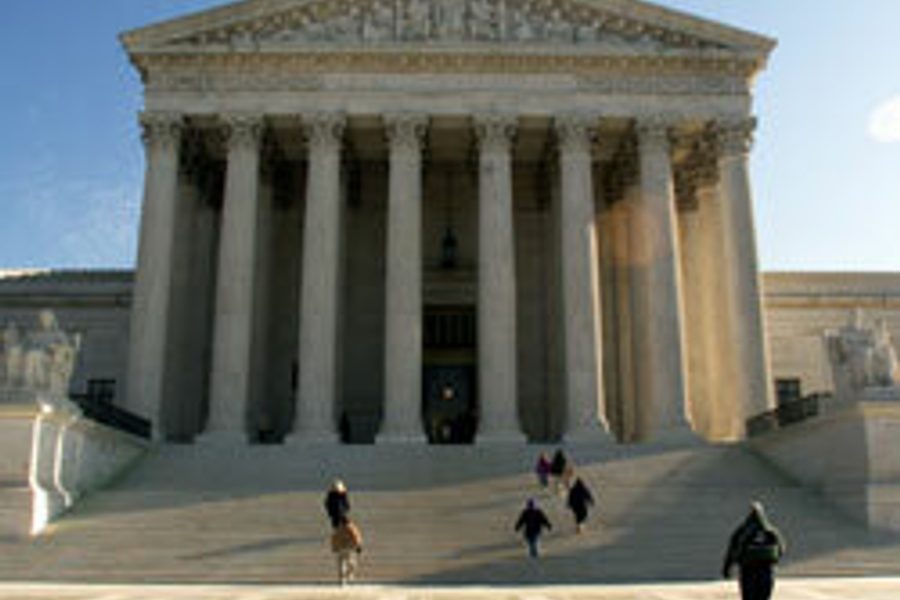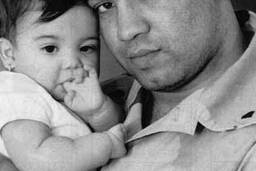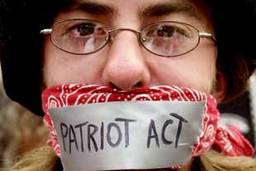
In a powerful 8-to-1 decision in late February, the U.S. Supreme Court ruled that an appeals court had made it unduly hard for an African-American Texas Death Row inmate to get a hearing on a claim his jury had been unconstitutionally purged of blacks.
The ruling in the case of Thomas Miller-El, which technically sends the case back to the 5th Circuit, is likely to reverberate through district and appellate courts across the country—especially in states like Texas and Pennsylvania, where local prosecutors have already been accused of stacking juries with whites in capital cases. On March 4, a study commissioned by the Pennsylvania Supreme Court called for a moratorium on executions in that state because of concerns about a disproportionate number of minorities on Death Row. One finding: Prosecutors were improperly barring black jurors in cases involving black defendants.
Miller-El would appear to be no saint. He stands convicted of first-degree murder for the ruthless 1985 execution of a Holiday Inn employee, whom he and two accomplices bound and gagged on the floor during a botched robbery. He was sentenced to death in 1986, along with his wife, Dorothy, who was one of his accomplices.
At his trial, Miller-El’s attorneys had protested what they said was the prosecution’s attempt to remove nearly all blacks from his jury. Of 11 black jurors who had confirmed they would be able to vote for a death penalty, the prosecution barred 10 using so-called peremptory challenges—challenges for which no reason has to be given. The only black person the prosecution accepted had told the court he believed that with murderers, the state should “pour honey on them and stake them out over an ant bed.”
The trial judge had rejected the defense claim of bias. Later state appellate courts likewise rejected claims of bias, saying the defense’s claims of deliberate prosecution efforts to remove blacks were “unconvincing.”
A habeas appeal to the federal district court also failed, with the judge declining to even consider the defense’s evidence submitted by the defense of a long history of racially motivated strikes of black jurors by the Dallas district attorney’s office. That evidence—a study by the Dallas Morning News of 100 cases between 1980 and 1986—showed the district attorney was routinely barring 90 percent of qualified blacks from juries.
The 5th Circuit Court of Appeals subsequently denied Miller-El’s request for an appeal, saying he had not made a “substantial showing of denial of a constitutional right.”
The Supreme Court, with Justice Clarence Thomas, its sole black member, alone in dissent, said that both the district court and the appeals court had erred in setting too high a bar of proof. The district court, the Supreme Court held, “did not give full consideration to the substantial evidence petitioner put forth in support of” racial bias in the jury selection, and instead “accepted without question the state court’s evaluation” of the non-racial intent of the prosecution.
As for the Fifth Circuit, the justices said it had erred in requiring Miller-El to prove with “clear and convincing evidence” that the state courts had been “unreasonable.”
“This,” the High Court held, “was too demanding a standard.”
In the end, Miller-El may still fail to convince a three-judge panel that prosecutors deliberately removed blacks from his jury. On the other hand, the judges may heed the words of Justice Anthony Kennedy, who, writing for the majority, noted that 10 of the 14 peremptory challenges used by the prosecution had been to bar qualified African-Americans from Miller-El’s panel. “Happenstance is unlikely to produce that disparity,” Kennedy wrote.
The ruling may lead to appeals of older death penalty decisions. In Pennsylvania, academic studies found that during the two terms of District Attorney Ed Rendell (former Democratic Party national chairman and now governor of the state), from 1978 to 1986, city prosecutors removed qualified blacks from juries 58 percent of the time (compared to 22 percent for whites). A training video produced by Rendell’s successor, Ronald Castille (later chief justice for the state’s Supreme Court), taught new young prosecutors tricks on how to remove blacks from juries without getting caught.
Says death penalty expert Robert Brady, former chairman of the National Coalition to Abolish the Death Penalty: “The Supreme Court ruling should have a remarkable system-wide effect.”
The ruling in the case of Thomas Miller-El, which technically sends the case back to the 5th Circuit, is likely to reverberate through district and appellate courts across the country—especially in states like Texas and Pennsylvania, where local prosecutors have already been accused of stacking juries with whites in capital cases. On March 4, a study commissioned by the Pennsylvania Supreme Court called for a moratorium on executions in that state because of concerns about a disproportionate number of minorities on Death Row. One finding: Prosecutors were improperly barring black jurors in cases involving black defendants.
Miller-El would appear to be no saint. He stands convicted of first-degree murder for the ruthless 1985 execution of a Holiday Inn employee, whom he and two accomplices bound and gagged on the floor during a botched robbery. He was sentenced to death in 1986, along with his wife, Dorothy, who was one of his accomplices.
At his trial, Miller-El’s attorneys had protested what they said was the prosecution’s attempt to remove nearly all blacks from his jury. Of 11 black jurors who had confirmed they would be able to vote for a death penalty, the prosecution barred 10 using so-called peremptory challenges—challenges for which no reason has to be given. The only black person the prosecution accepted had told the court he believed that with murderers, the state should “pour honey on them and stake them out over an ant bed.”
The trial judge had rejected the defense claim of bias. Later state appellate courts likewise rejected claims of bias, saying the defense’s claims of deliberate prosecution efforts to remove blacks were “unconvincing.”
A habeas appeal to the federal district court also failed, with the judge declining to even consider the defense’s evidence submitted by the defense of a long history of racially motivated strikes of black jurors by the Dallas district attorney’s office. That evidence—a study by the Dallas Morning News of 100 cases between 1980 and 1986—showed the district attorney was routinely barring 90 percent of qualified blacks from juries.
The 5th Circuit Court of Appeals subsequently denied Miller-El’s request for an appeal, saying he had not made a “substantial showing of denial of a constitutional right.”
The Supreme Court, with Justice Clarence Thomas, its sole black member, alone in dissent, said that both the district court and the appeals court had erred in setting too high a bar of proof. The district court, the Supreme Court held, “did not give full consideration to the substantial evidence petitioner put forth in support of” racial bias in the jury selection, and instead “accepted without question the state court’s evaluation” of the non-racial intent of the prosecution.
As for the Fifth Circuit, the justices said it had erred in requiring Miller-El to prove with “clear and convincing evidence” that the state courts had been “unreasonable.”
“This,” the High Court held, “was too demanding a standard.”
In the end, Miller-El may still fail to convince a three-judge panel that prosecutors deliberately removed blacks from his jury. On the other hand, the judges may heed the words of Justice Anthony Kennedy, who, writing for the majority, noted that 10 of the 14 peremptory challenges used by the prosecution had been to bar qualified African-Americans from Miller-El’s panel. “Happenstance is unlikely to produce that disparity,” Kennedy wrote.
The ruling may lead to appeals of older death penalty decisions. In Pennsylvania, academic studies found that during the two terms of District Attorney Ed Rendell (former Democratic Party national chairman and now governor of the state), from 1978 to 1986, city prosecutors removed qualified blacks from juries 58 percent of the time (compared to 22 percent for whites). A training video produced by Rendell’s successor, Ronald Castille (later chief justice for the state’s Supreme Court), taught new young prosecutors tricks on how to remove blacks from juries without getting caught.
Says death penalty expert Robert Brady, former chairman of the National Coalition to Abolish the Death Penalty: “The Supreme Court ruling should have a remarkable system-wide effect.”
Dave Lindorff, an In These Times contributing editor, is the author of This Can’t Be Happening: Resisting the Disintegration of American Democracy. His work can be found at This Can’t Be Happening.








